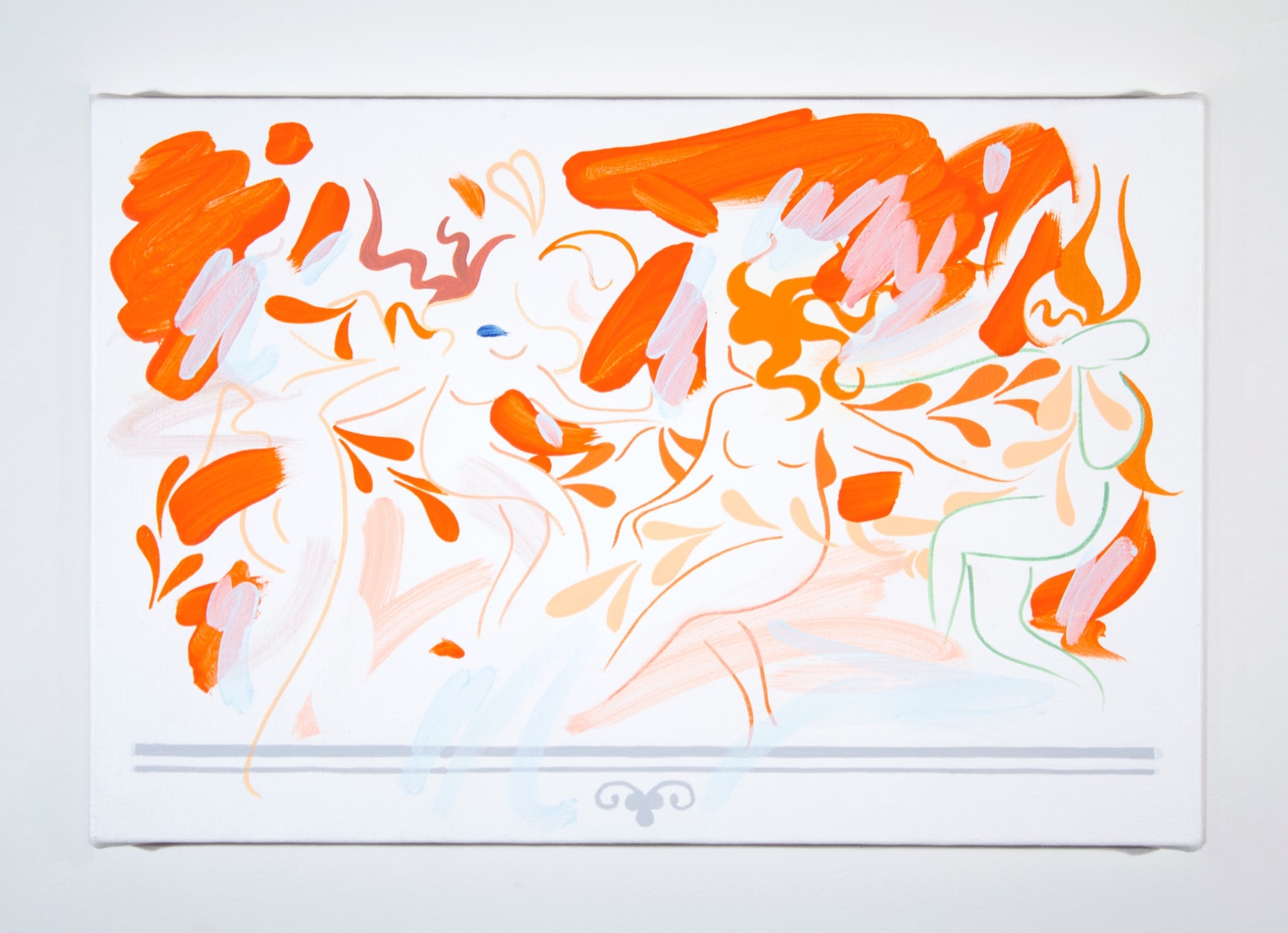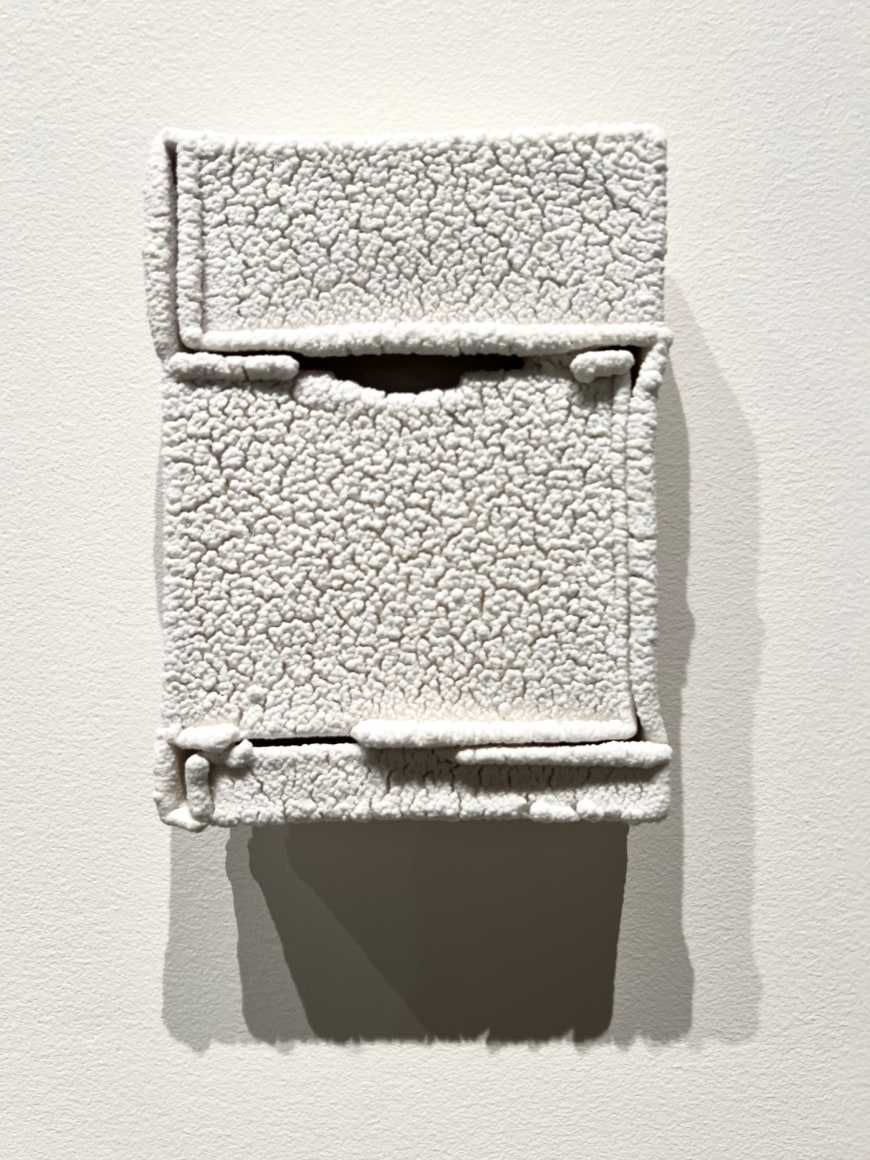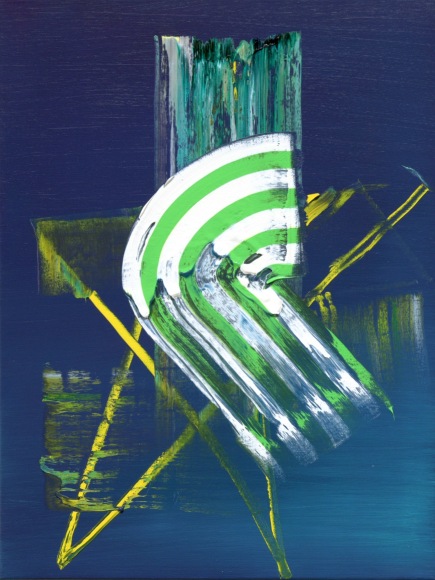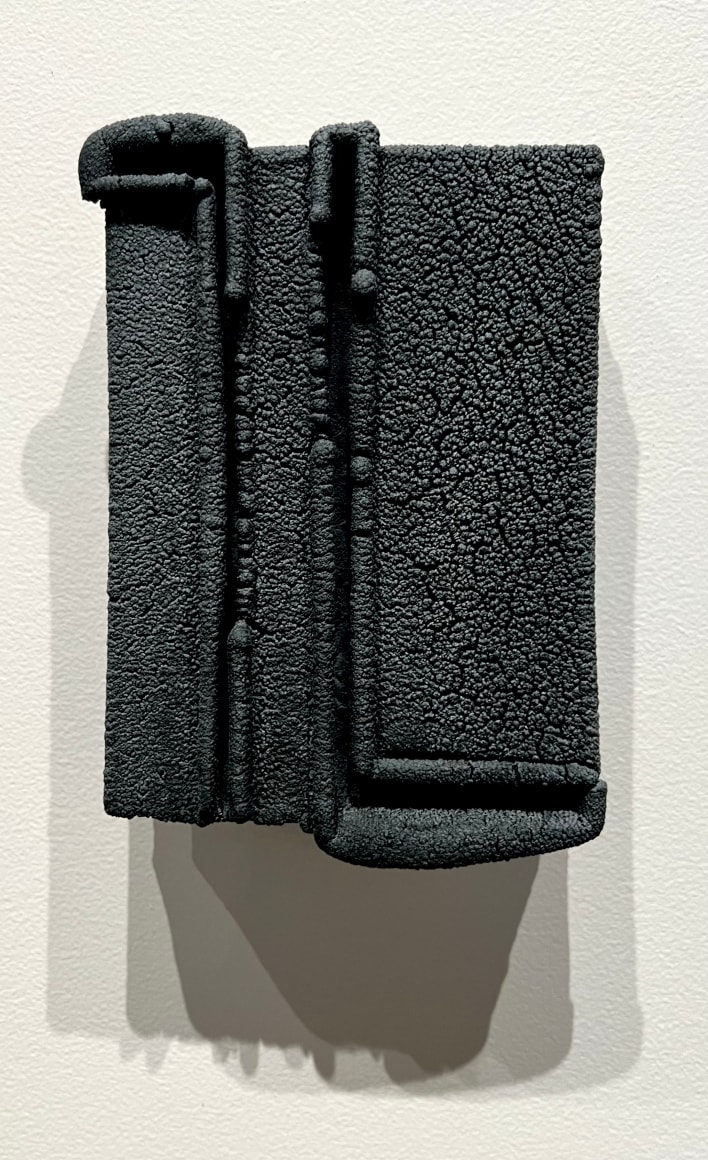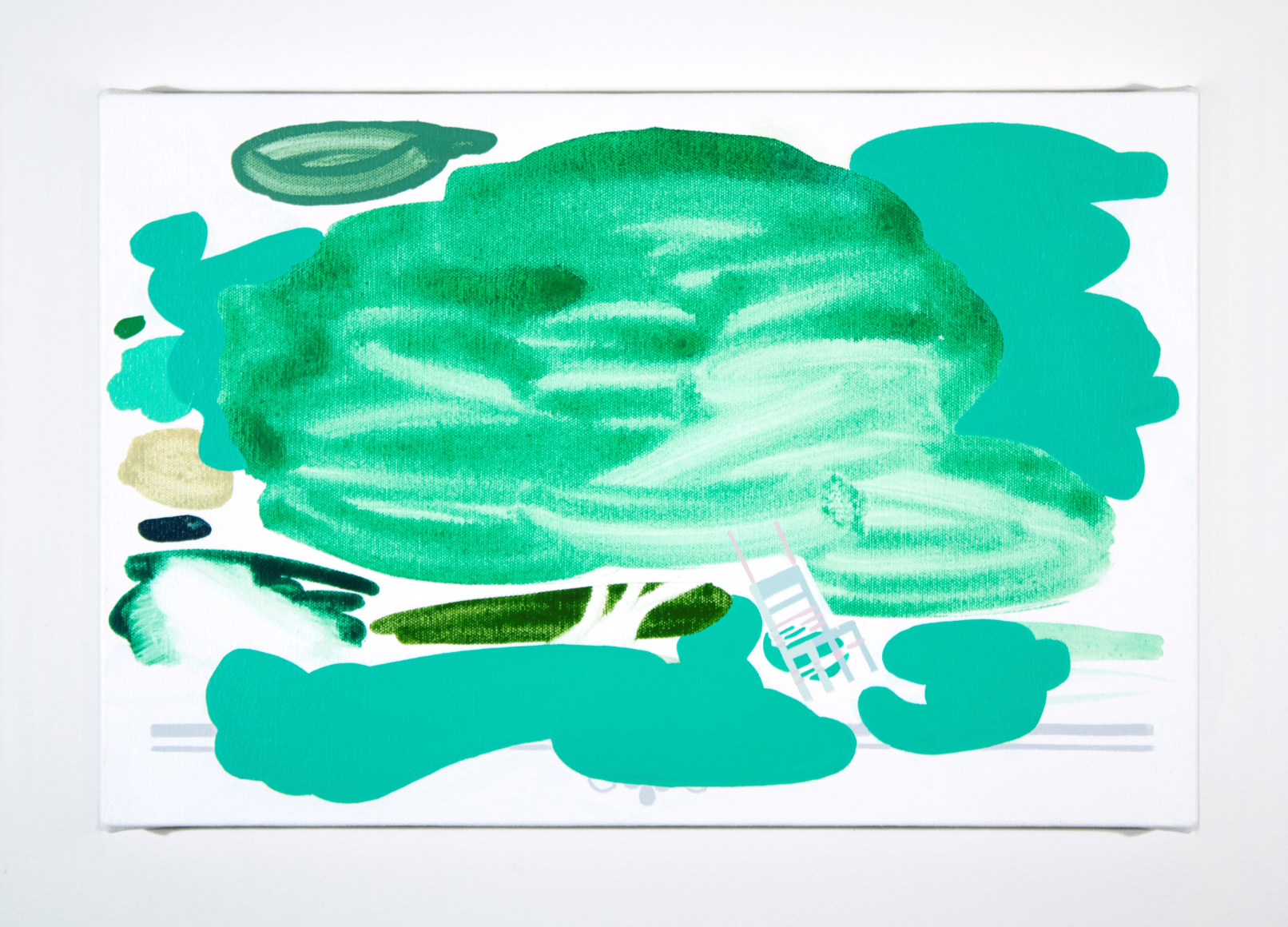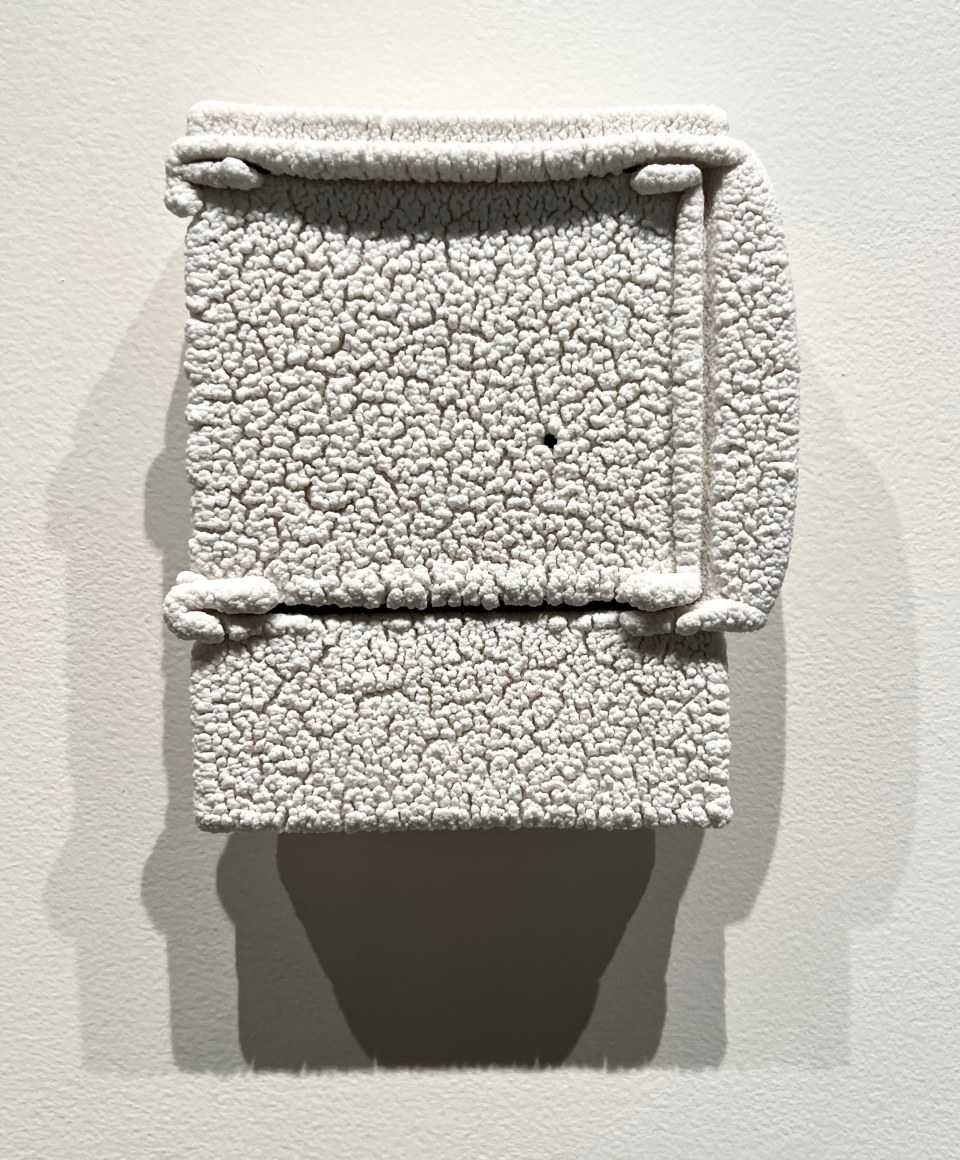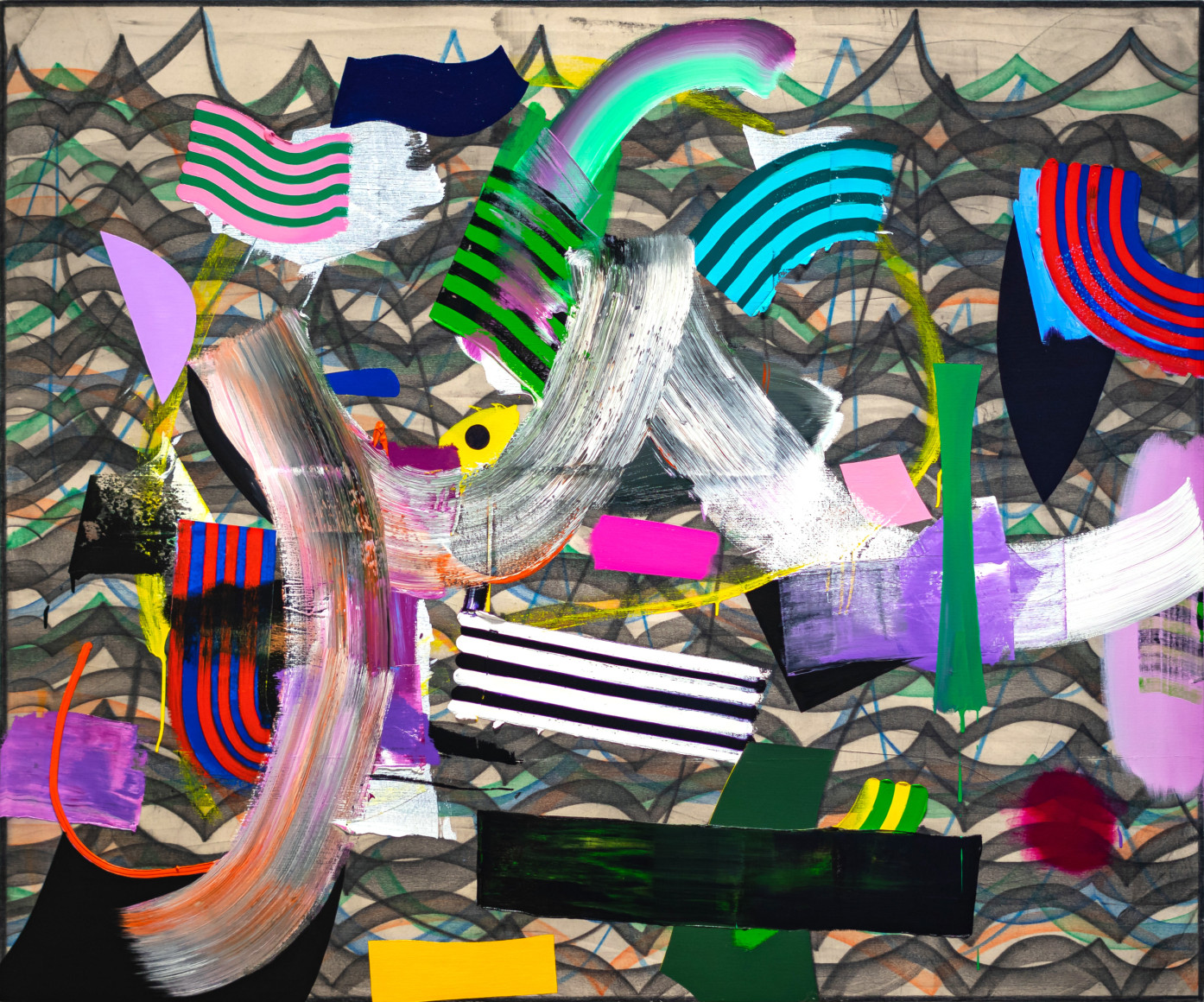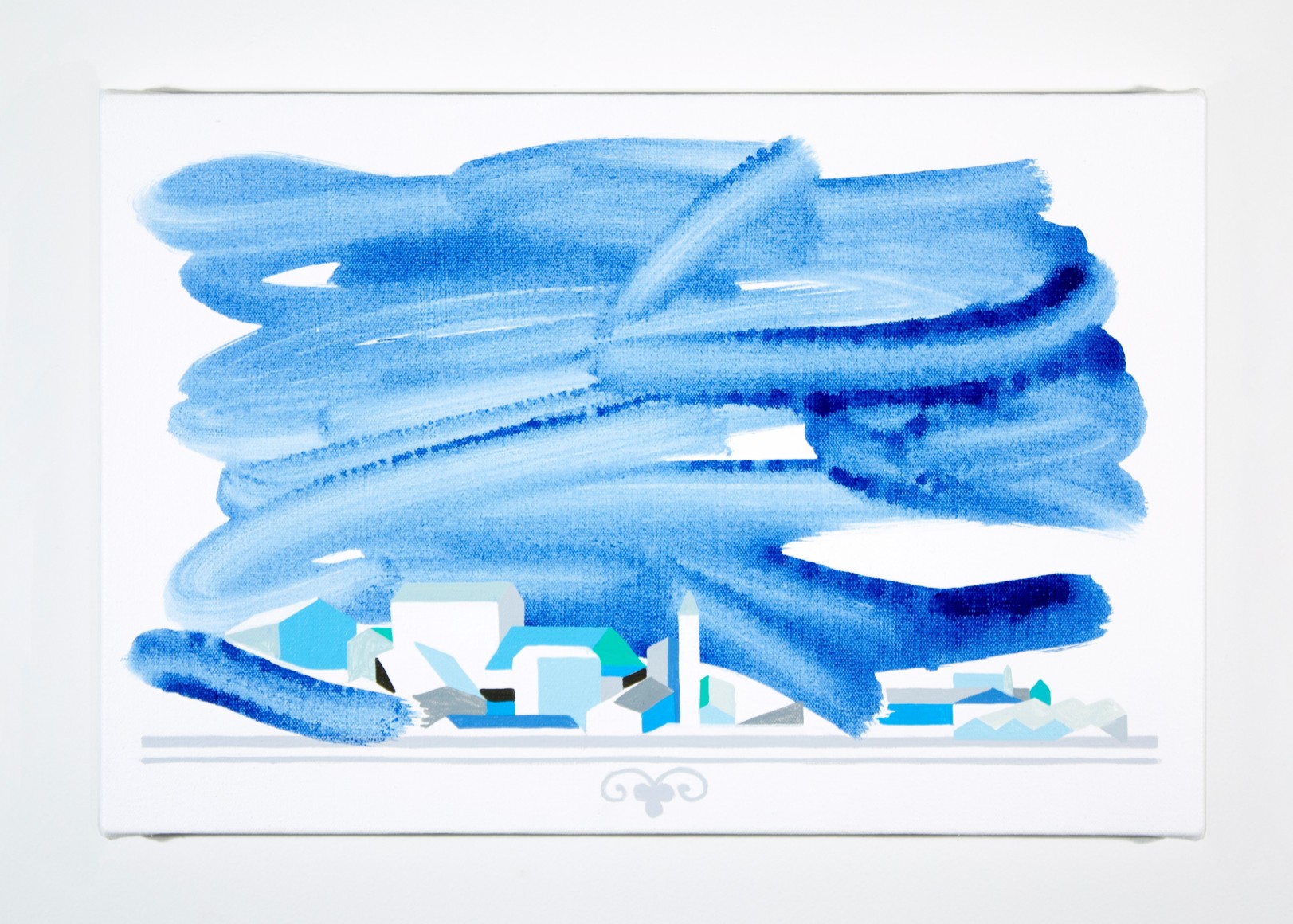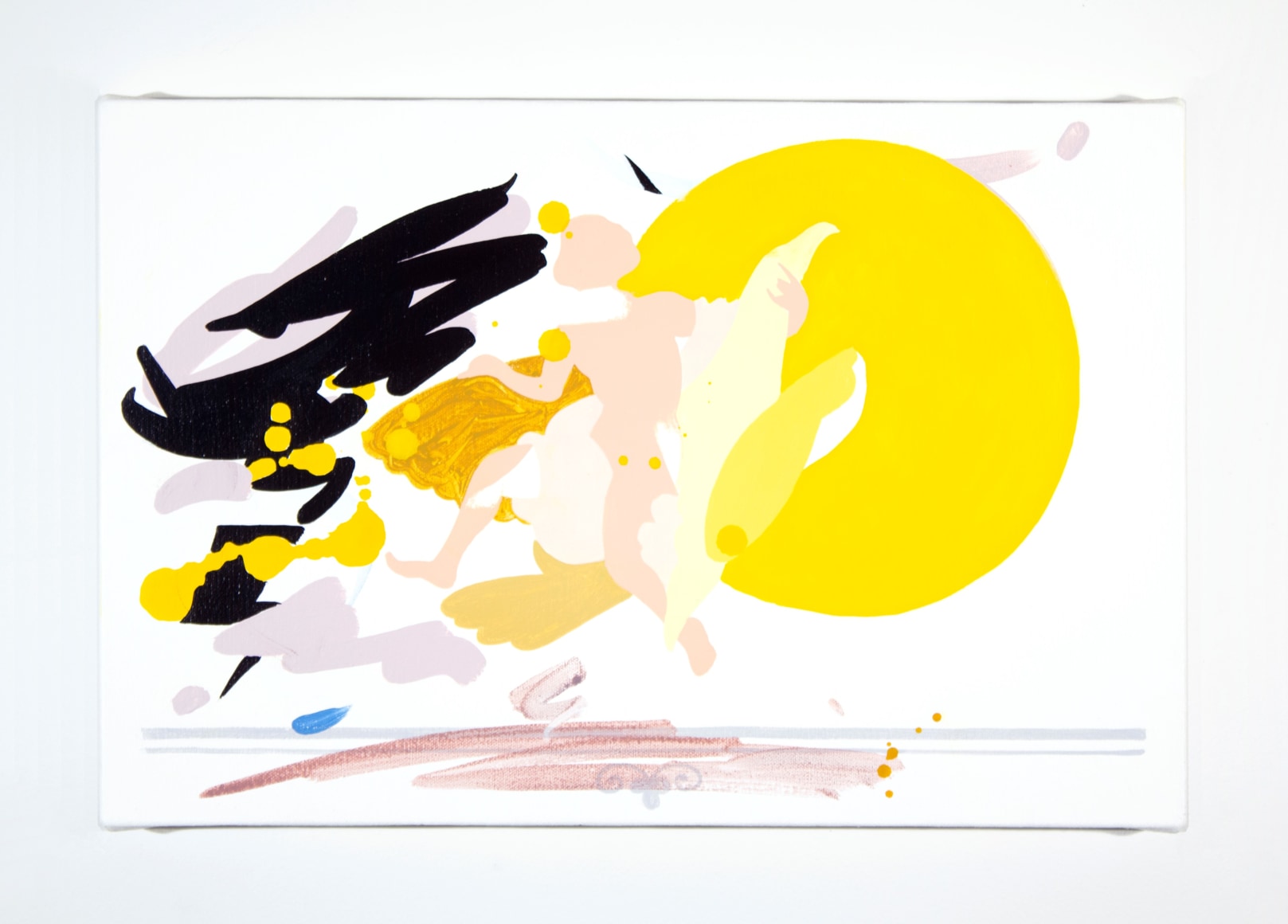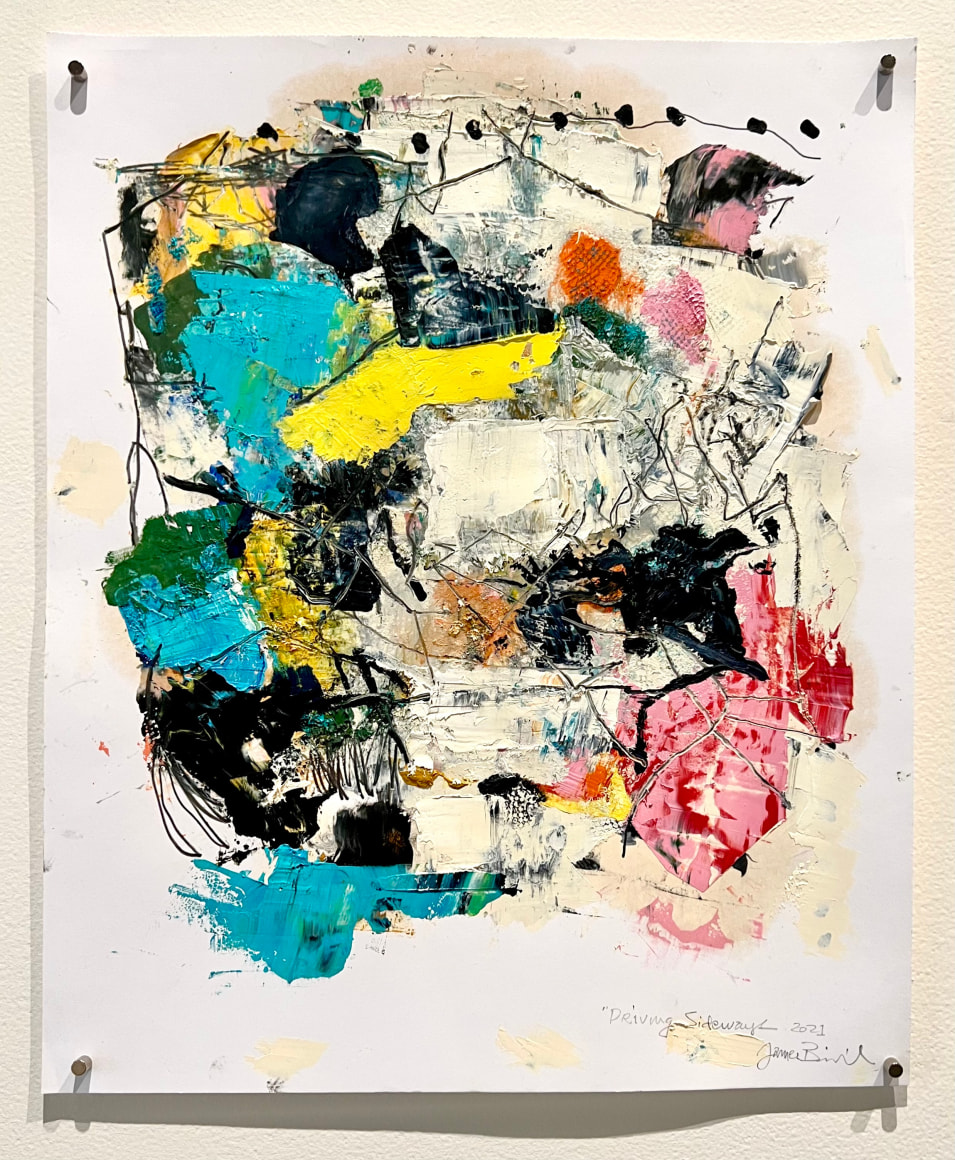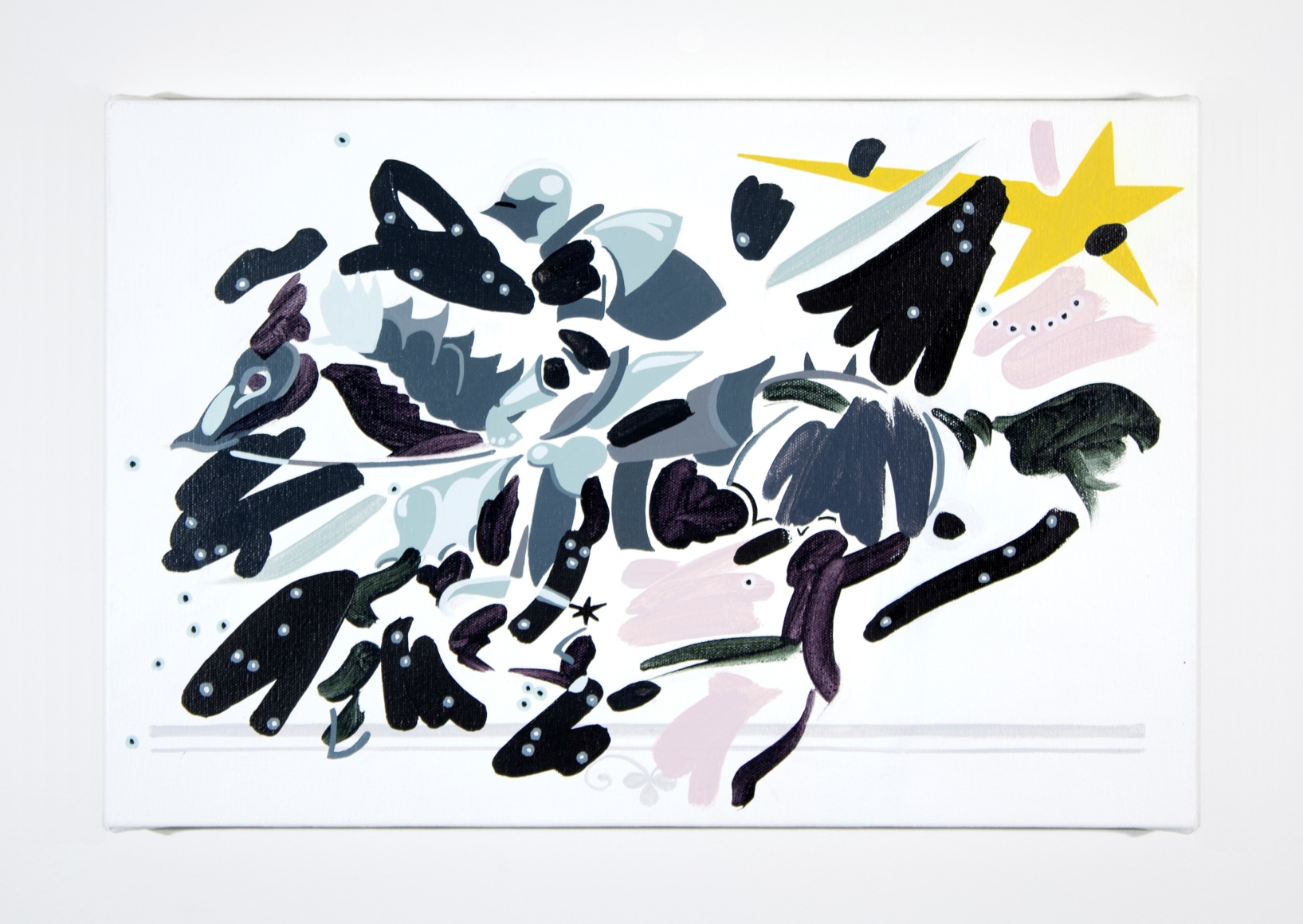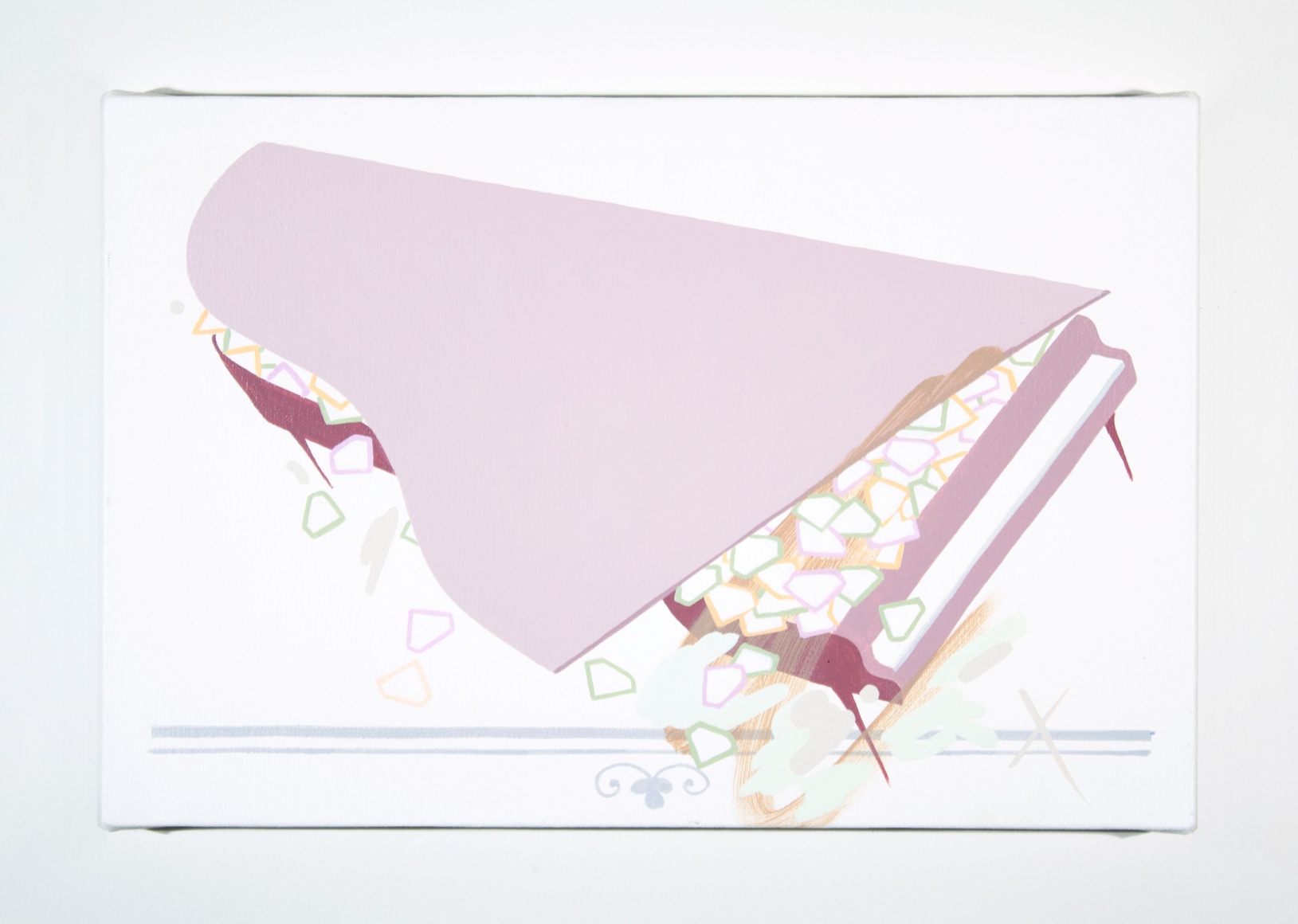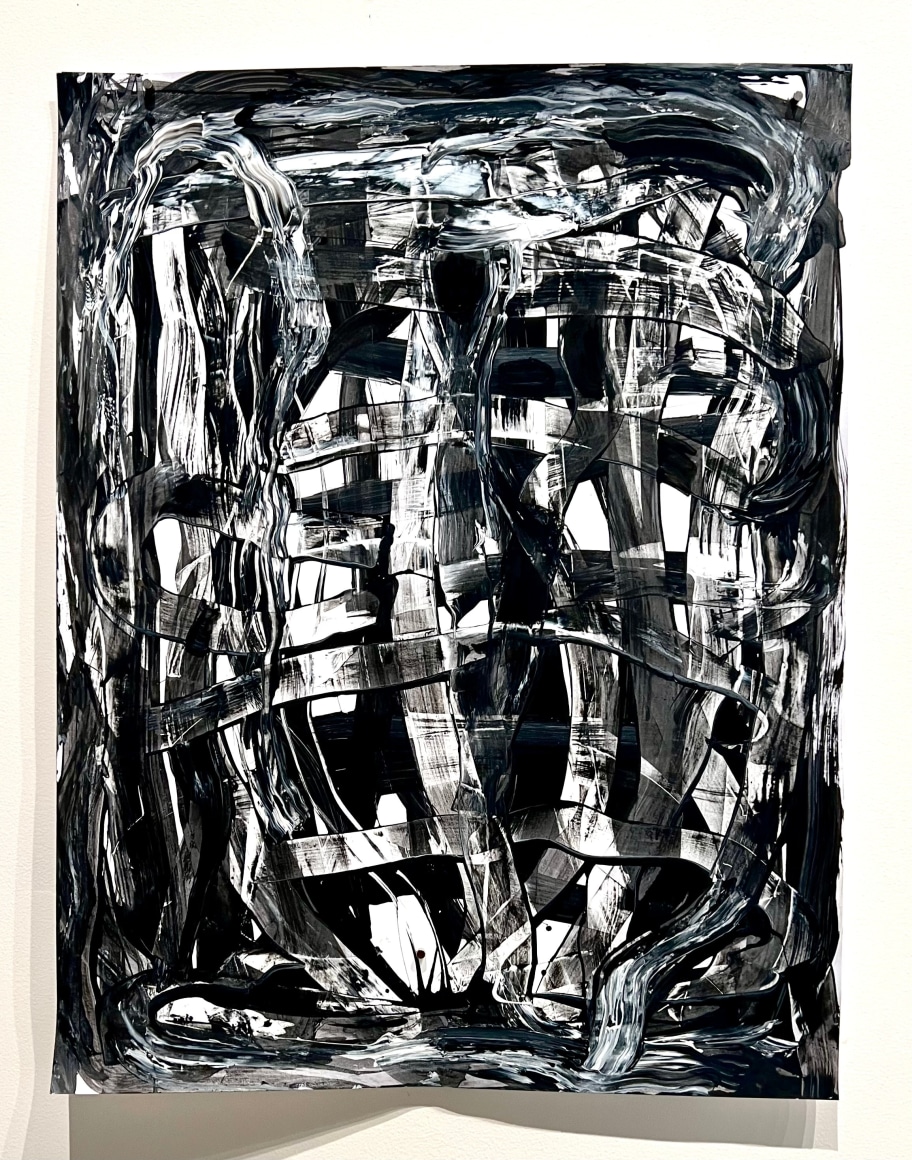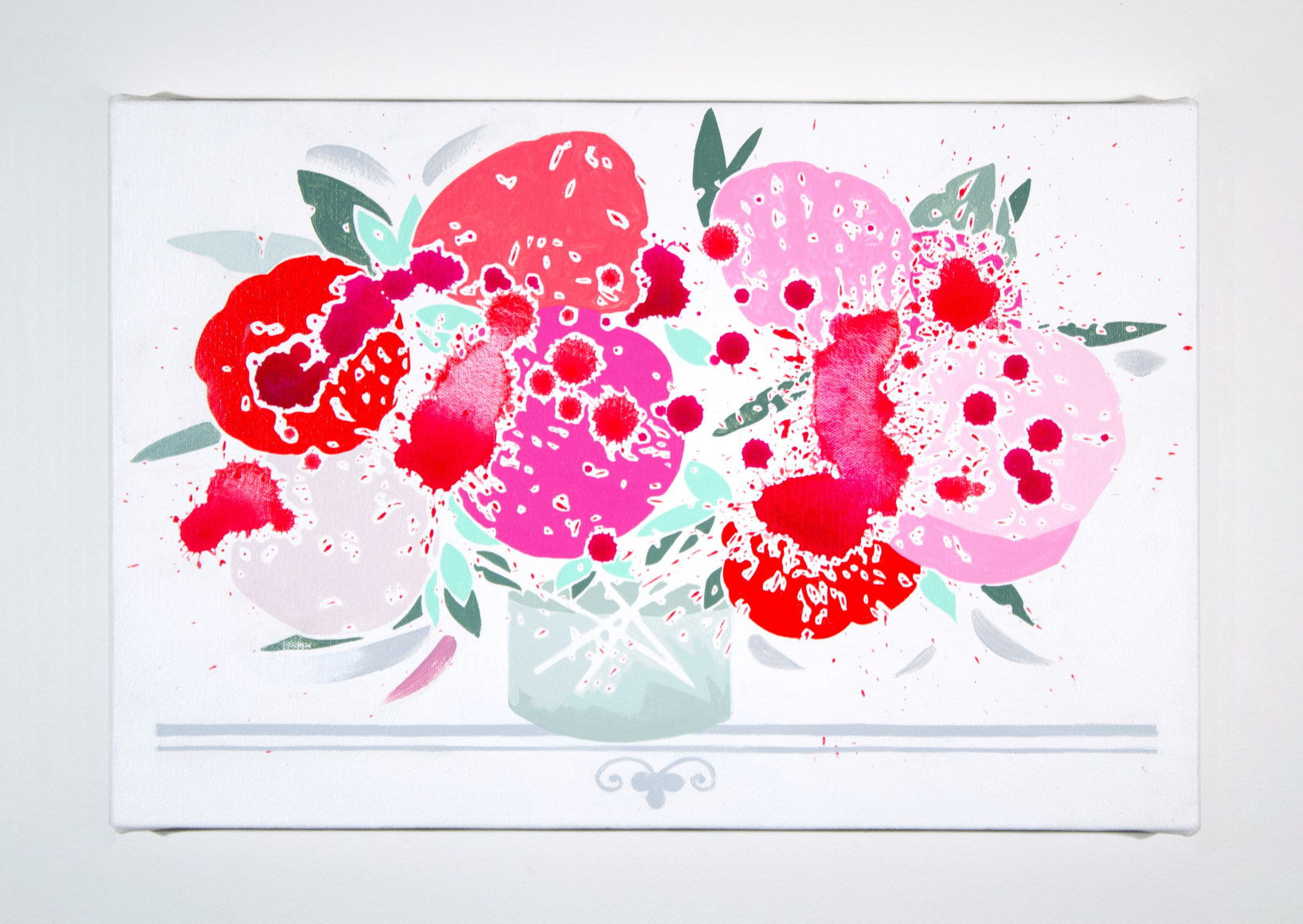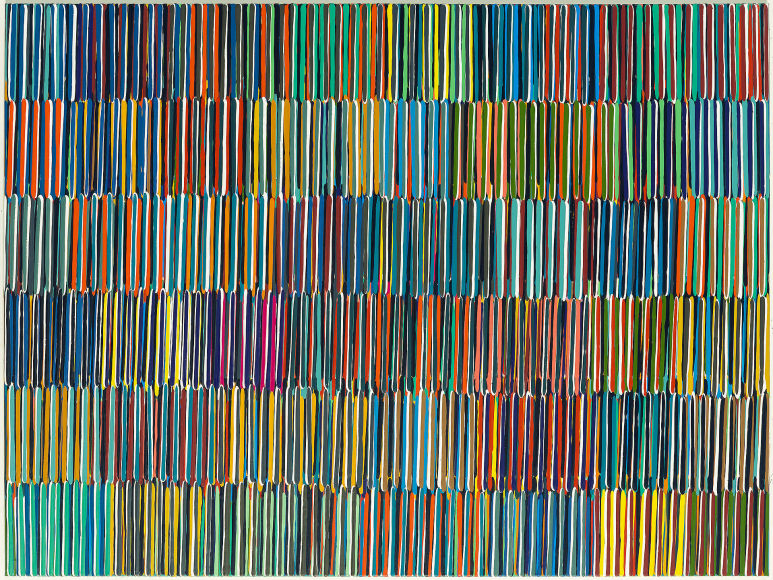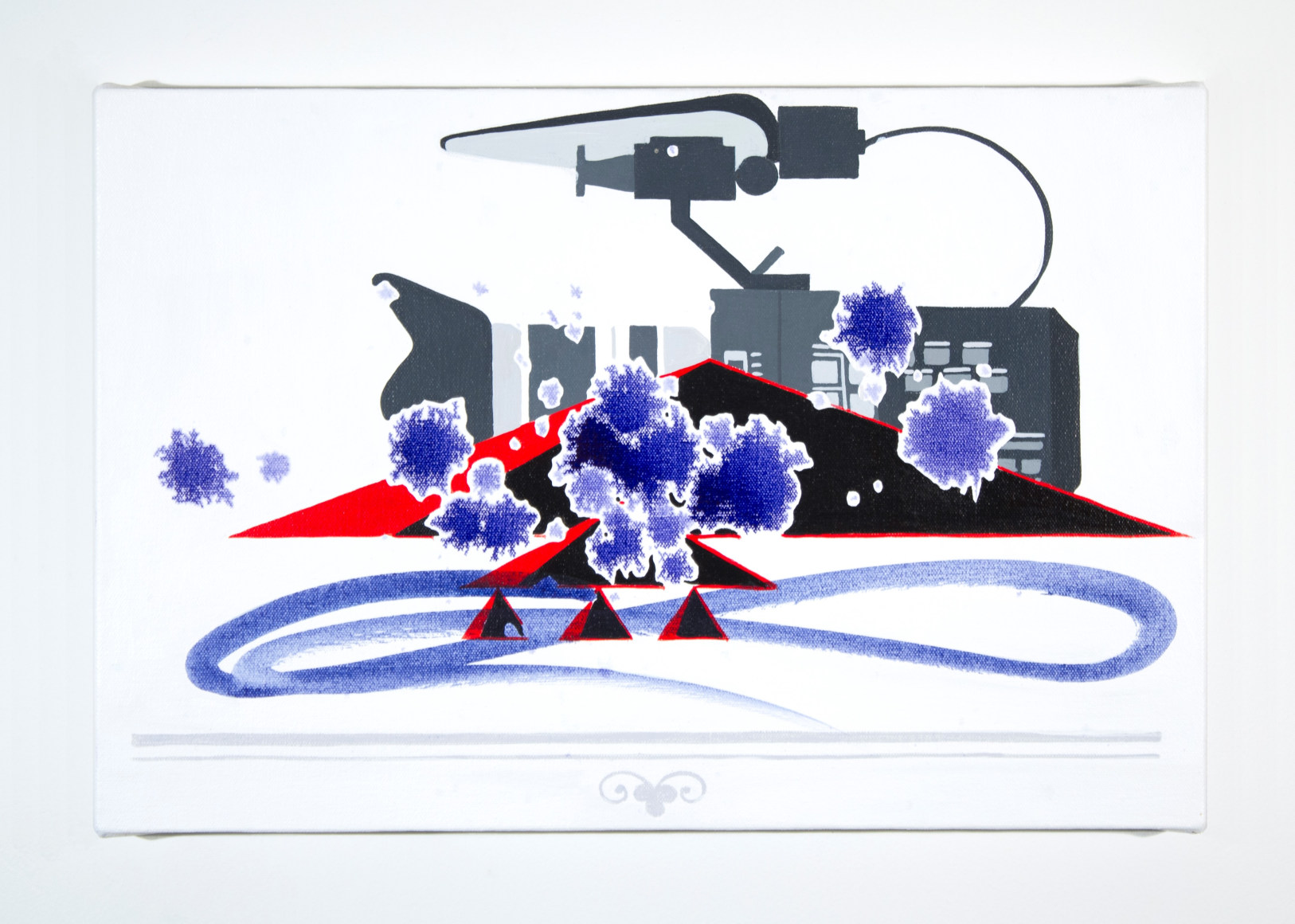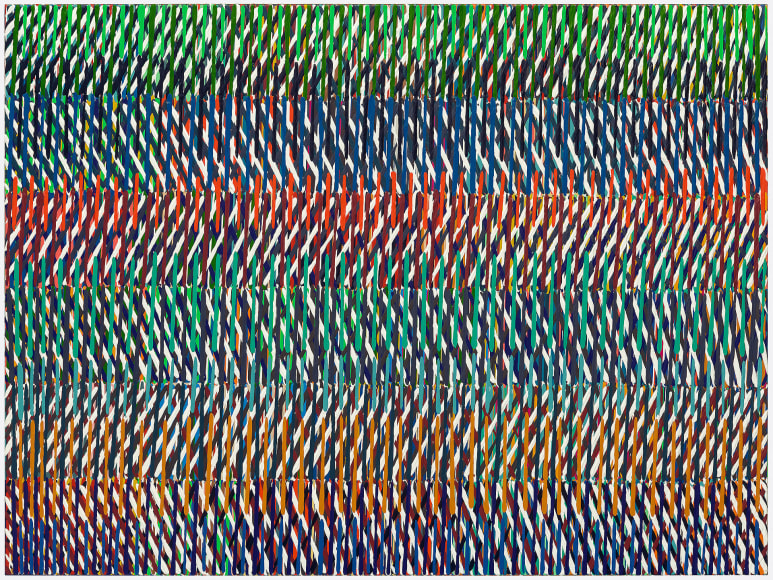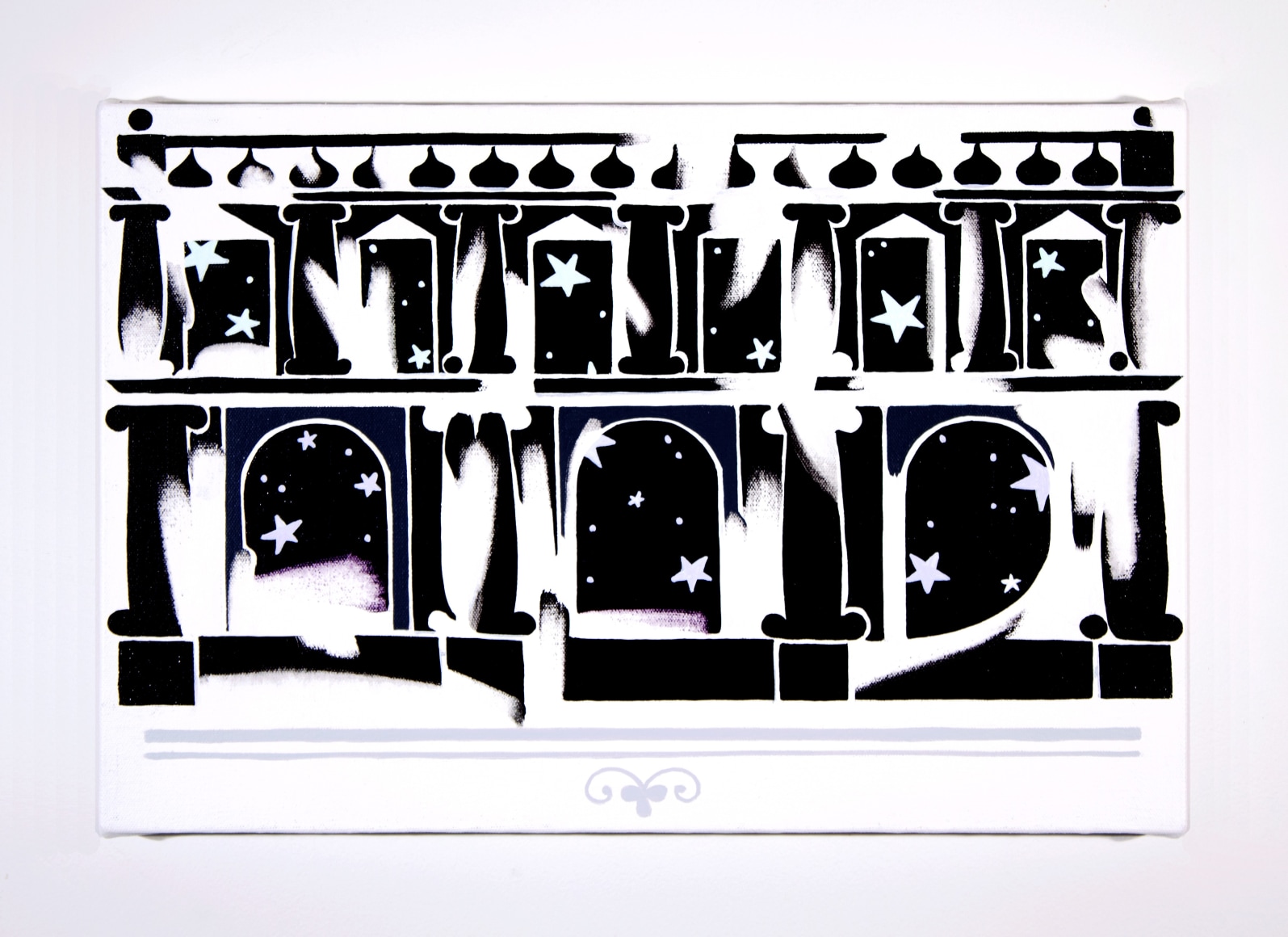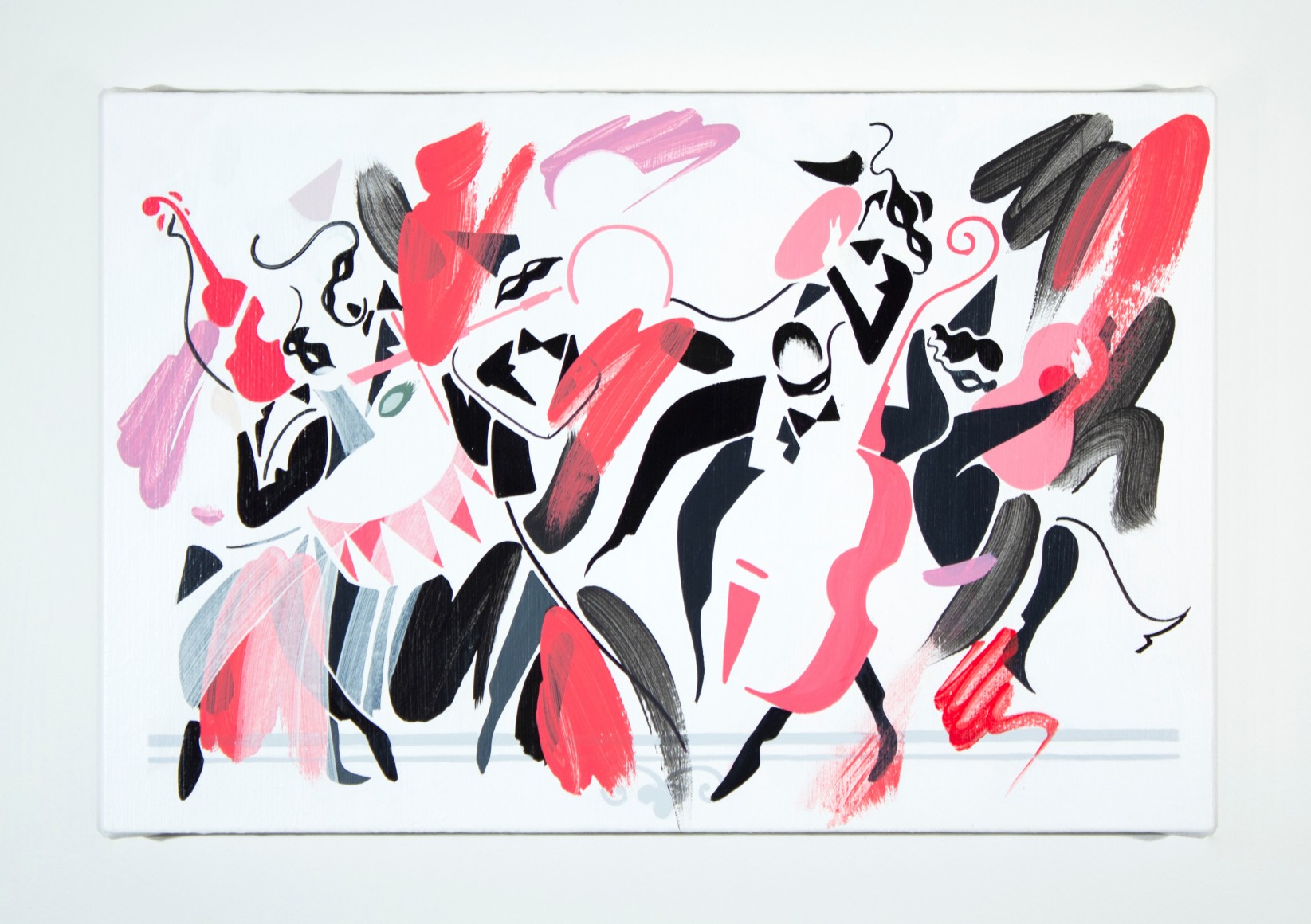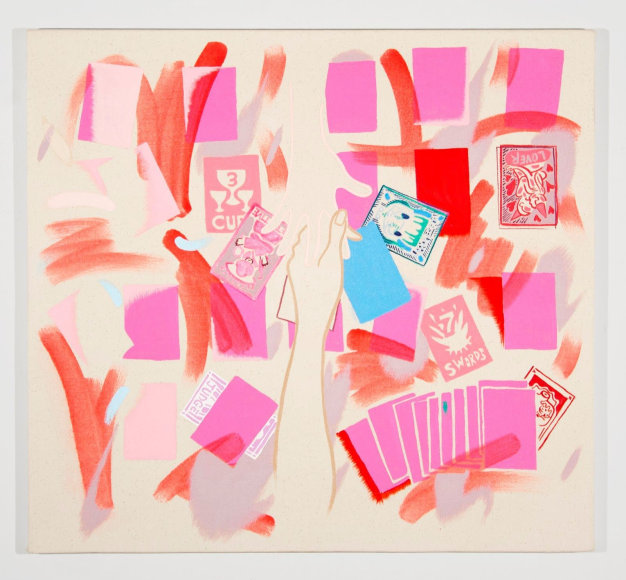Distant Context. Selected recent work from six of our artists (Brinsfield, Cain, Esser, Granados, Kottmann, Sall). There is a shared interest in: the grid, drawing, freedom, control, narrative, architecture, and more. We have included one to three pieces of five of the artists which are at a physical remove – distant to activate you, the viewer.
The featured artist of Distant Context is Peter Granados with ten small paintings in his “Daily Cards” series presented in a serial fashion along one long wall. These paintings share vibrant explosions of color and gestural abstraction with hints of an underlying narrative focused on the reality of “the present moment.”
Similar to his earlier work, these paintings are a synthesis of experience and thought.
And continue to reference ideas found in classical literature, esoteric philosophy and mythology. They also draw upon memories of his experience as a child growing up in an esoteric community, a "Fourth Way School" in Northern California, committed to the practices of self-development and spiritual evolution introduced by early 20th century Russian mystic, G.I. Gurdjieff.
These paintings present the viewer with a series of unfolding incidents happening instantly on the canvas. In each, there is a sense of mystery and the unknown. For example:
In “Play,” an abstracted tree appears as a green cloud of thought or memory, while a chair-swing has already been set in motion. Is the chair swinging upward or back down? The viewer sees only this glimpse of a moment.
In “Relativity,” anonymous geometric buildings rest beneath a massive and tumultuous blue sky. Are we seeing an interpretation of this landscape, an approaching storm? Or is the viewer seeing the way this landscape felt in that moment?
The artist has said these paintings draw from the daily inspirational cards that his parents collected from their spiritual teacher,
“We referred to them as ‘Daily Cards’ as they were distributed throughout our community on a daily basis. On each card was a single sentence; an aphorism or quote plucked from the teacher’s many spiritual lessons. Each one was 3 x 3 inches square, letter pressed, and embossed. They were collectible objects, tokenized, often displayed on dashboards and refrigerators. Like the Daily Cards, these paintings are sound bites from something larger, carefully cut for the sake of being read as powerfully singular. In preparation for these paintings, I have tried to think about my short oeuvre as though it were as complex as an esoteric school. How can I learn from my paintings? Does my work convey an ethos? If so, how can I begin to identify this ethos?”
Perhaps, just as the Daily Cards were meant to remind students of a singular and important moment of a spiritual lesson, Granados’s paintings point to those singular and important moments of transcendent beauty in the world around us, bringing us a little closer to the truth of what it means to be present to the experience of living.
As for the other five great artists in this exhibition, consider:
Cary Esser’s Commitment to Craft, Surface Texture and the beautiful flaw:
Esser is fascinated with the exterior surface texture of architectural forms, how surface texture relates to the interior experience, and how ultimately everything that is built falls down and returns to the earth.
Esser’s wall-reliefs further explore her investigation into the fragile strength of surface textures – the outer “shield” that protects what is within. The wall-reliefs are made from liquid clay poured into flexible, grid-like molds. The flexibility of the mold encourages flaws to occur during firing. These purposeful flaws point to Esser’s excellent craftmanship – to create a ceramic sculpture that is both fragile and solid, “flawed” and whole, is a difficult endeavor. These sculptures also serve as reflections of our human and natural state, in which every shield has an imperfection, even if it is only that it is finite and will succumb to the entropy of time, eventually revealing what it protects. In Esser’s view it is this flaw that is “in the end of architecture, the end of the body, [the] inevitable succumbing to gravity, to decomposition, [that provides a] return to the earth, and … the prospect of growth and renewal.”
Marcus Cain’s Abstraction of Memory:
Cain reinterprets the modernist grid through abstracting layers and lines of color to represent particular memories, intentions and emotions. While this grid gives a structure and form to these psychological phenomena, the layered effect of his painted lines and patterns also create tension against the structure, and perhaps against being placed within a literal and figurative box. The layers of color and line create two-dimensional depth - focused colors and lines layered within a sea of pattern and color with no one focal point. Looking at the painting, the viewer experiences the painting as “moving” or “buzzing.” Ultimately this tension allows the viewer to step outside of their typical perceptions of what they might “see” and experience a version of sensory synesthesia in which they “feel” the color of each line, which in turn is representative of a wish, a thought, an emotion or a memory.
Eric Sall’s Bold Stripes and Playful Abstraction:
As Eric Sall explains in his own statement, his paintings are often a call and response, in which he approaches his canvases with a question about life, or to make sense of what is happening in the world and the nonverbal answers flood in through elements gleaned from various movements of abstraction. To the outside viewer, we may not know the answers that Sall has received from his paintings, but we have the benefit of absorbing the lyrical movement and whimsical colors of each work. Sall’s paintings often appear as a moment of a song, captured in a visual snapshot. Sometimes that song is joyful and chaotic, sometimes it is stoic and anthemic, or something in between – but always the painting is boldly speaking to the viewer, inviting them into an important conversation.
James Brinsfield’s Textures and Mark Making:
Whether a small or large work, a viewer immediately knows a Brinsfield when they see it. A master of employing different varieties of texture and mark-making techniques, all in support of expressive investigations and contemporary happenings, every square inch of a Brinsfield canvas is interesting to look at – an abstracted narrative unfolding in front of you. Brinsfield paints smaller works at the same time that he creates his large paintings. At first some of the small paintings were a thoughtful way to use paint from larger projects and to be a good steward of his supplies.
However, the practice of the smaller paintings continued to become a vehicle in their own right for exploring textures and mark-making and they hold immense power in spite of a diminutive size.
Don Kottmann’s Small Works:
In April 2022 we exhibited twelve of Kottmann’s 7 x 6 foot landscape paintings - exuberant works painted with vibrant colors and energetic brush strokes.
Those pieces felt immense as if the viewer could step into the landscape and walk around.
For this exhibition, we are showing one of Kottmann’s smaller paintings on paper. Despite a constrained black and white palette, the work seems to hold within its boundaries the frenetic energy of one of his large scale paintings. The painting is a Pandora’s box of emotion ready to be released by the curious viewer.

